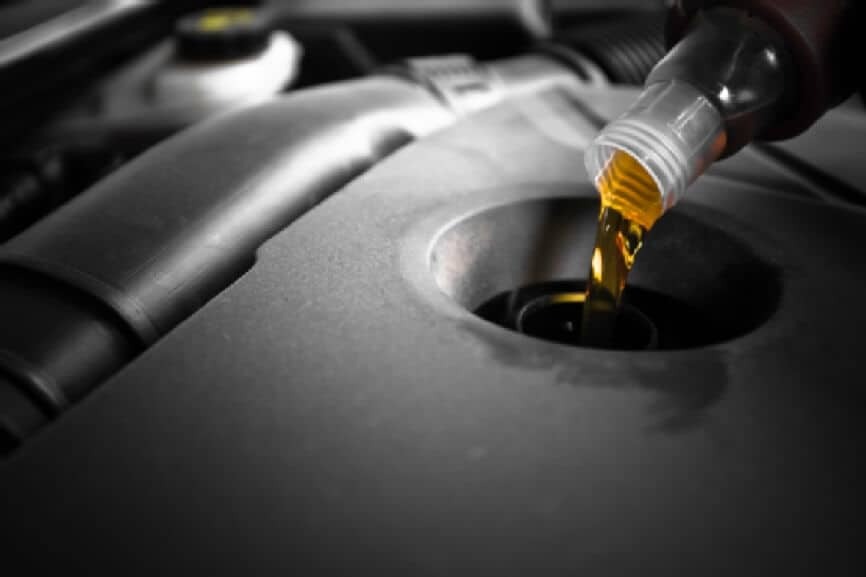Notes when changing Oil and filter changes

When it comes to maintaining the optimal performance of your vehicle, few things are as crucial as regular oil changes and filter replacements. The engine oil serves as the lifeblood of your car, ensuring smooth operation and preventing friction-related damage. However, this vital fluid requires periodic attention and, coupled with filter changes, plays a pivotal role in extending the lifespan of your engine. Let’s delve into the essential notes and considerations when undertaking the task of changing oil and filters, ensuring that your vehicle continues to run smoothly and efficiently.

Contents
- 1 Importance of Regular Oil and Filter Changes
- 2 Choosing the Right Oil
- 3 Selecting the Right Oil Filter
- 4 Necessary Tools and Supplies
- 5 Step-by-Step Instructions for Changing Oil and Filter
- 6 Recommended Oil Change Intervals
- 7 Benefits of DIY Oil Changes
- 8 When to Seek Professional Help
- 9 Notes when changing Oil and filter changes
Importance of Regular Oil and Filter Changes
Regular oil and filter changes are vital for the overall health of your vehicle’s engine. Here are a few key reasons why oil and filter changes are important:
- Lubrication: Engine oil lubricates various moving parts, reducing friction and wear, which helps to prevent premature engine failure.
- Heat Dissipation: Engine oil helps to dissipate heat generated during the combustion process, preventing overheating and potential damage to engine components.
- Contaminant Removal: Over time, engine oil accumulates dirt, debris, and contaminants, which can lead to engine sludge and reduced efficiency. Regular oil and filter changes help to remove these harmful particles.
- Fuel Efficiency: Clean oil reduces engine drag, allowing for smoother operation and improved fuel efficiency.
Choosing the Right Oil
Selecting the correct type of oil for your vehicle is crucial for optimal performance. Here are some factors to consider when choosing the right oil:
- Viscosity: The viscosity rating of the oil determines its thickness and flow characteristics at different temperatures. Consult your vehicle’s owner’s manual to determine the recommended viscosity grade for your engine.
- API Service Rating: The American Petroleum Institute (API) assigns service ratings to oils based on their performance levels. Look for oils that meet or exceed the requirements specified by your vehicle manufacturer.
- Synthetic vs. Conventional: Synthetic oils offer better performance, superior protection, and extended drain intervals compared to conventional oils. However, they can be more expensive. Consider your budget and driving conditions when deciding between synthetic and conventional oil.
Selecting the Right Oil Filter
Choosing the correct oil filter is equally important as selecting the right oil. Here are some factors to consider when choosing an oil filter:
- Compatibility: Ensure that the oil filter you choose is compatible with your vehicle’s make, model, and engine specifications.
- Filtration Efficiency: Look for filters with high filtration efficiency to effectively remove contaminants from the oil.
- Quality: Opt for reputable brands known for their quality filters. Cheaper filters may compromise filtration efficiency and overall performance.
See more: What do you need to pay attention to in car maintenance?
Necessary Tools and Supplies
Before starting the oil and filter change, gather all the necessary tools and supplies:
- Oil Drain Pan: A sturdy pan or container to collect the used oil during the draining process.
- Socket Set: A socket set with the appropriate sizes to remove the drain plug and oil filter.
- Oil Filter Wrench: An oil filter wrench to easily remove the old filter.
- Funnel: A funnel to pour new oil into the engine without spills.
- Shop Towels: Clean shop towels or rags for wiping up any spills or messes.
- New Oil Filter: Ensure you have a new oil filter that matches the specifications of your vehicle.
- New Oil: Purchase the correct amount and viscosity grade of oil recommended for your vehicle.
Step-by-Step Instructions for Changing Oil and Filter
Now that you have all the necessary information, let’s go through a step-by-step guide on how to change your vehicle’s oil and filter:
- Prepare Your Vehicle: Park your vehicle on a level surface and turn off the engine. Engage the parking brake for added safety.
- Drain Old Oil: Locate the oil drain plug under your vehicle’s engine and place the drain pan beneath it. Loosen the drain plug with a socket wrench and allow the old oil to drain completely.
- Replace Oil Filter: Once the old oil has drained, locate the oil filter (usually near the drain plug). Use an oil filter wrench to loosen it and carefully remove it by hand. Apply a thin layer of new oil to the rubber gasket on the new filter before installing it by hand. Tighten it according to the manufacturer’s instructions.
- Refill with New Oil: Locate the oil filler cap on top of your engine. Remove it and insert a funnel into the opening. Slowly pour in the new oil according to your vehicle manufacturer’s recommended quantity and viscosity grade.
- Check Oil Level: After pouring in the new oil, wait a few moments for it to settle into the engine. Use the dipstick to check the oil level, ensuring it falls within the recommended range.
- Dispose of Used Oil Properly: Transfer the used oil from the drain pan into a sealable container and take it to a local recycling center or an auto parts store that accepts used oil for proper disposal.
- Clean Up: Wipe any spilled oil from under your vehicle using shop towels or rags. Properly dispose of any used towels or rags contaminated with oil.
Recommended Oil Change Intervals
While it’s important to refer to your vehicle’s owner’s manual for specific recommendations, here are some general guidelines for oil change intervals:
- Conventional Oil: Typically, conventional oils should be changed every 3,000 to 5,000 miles or every three months, whichever comes first.
- Synthetic Oil: Synthetic oils have longer-lasting properties and can often be changed every 7,500 to 10,000 miles or once a year, depending on driving conditions.
It’s crucial to note that these intervals may vary based on factors such as driving habits, climate conditions, and vehicle usage patterns.
Benefits of DIY Oil Changes
Performing your own oil changes can offer several benefits:
- Cost Savings: By performing DIY oil changes, you can save money on labor costs associated with professional service.
- Sense of Satisfaction: Completing this routine maintenance task yourself can provide a sense of accomplishment and satisfaction.
- Increased Knowledge: Performing DIY oil changes allows you to gain a better understanding of your vehicle’s mechanics and improve your overall automotive knowledge.
- Convenience: With some basic tools and supplies, you can change your vehicle’s oil at your own convenience without having to schedule appointments or visit a service center.
When to Seek Professional Help
While performing DIY oil changes is beneficial, there are situations where seeking professional help is necessary:
- Limited Mechanical Knowledge: If you lack experience or confidence in performing automotive maintenance tasks, it’s best to seek professional assistance to avoid potential damage.
- Warranty Requirements: Some vehicle warranties require routine maintenance tasks like oil changes to be performed by certified technicians at authorized service centers.
- Complex Engine Configurations: Certain vehicles have intricate engine designs or components that make DIY oil changes challenging or time-consuming.
Notes when changing Oil and filter changes
Regularly changing your vehicle’s oil and filter is essential for maintaining optimal engine performance and prolonging its lifespan. By following these essential notes and step-by-step instructions, you can confidently perform DIY oil changes while reaping the benefits of cost savings and increased automotive knowledge. Remember to always consult your vehicle’s owner’s manual for specific recommendations and guidelines regarding proper maintenance procedures.
Remember, if you feel unsure or uncomfortable performing an oil change yourself, it’s always best to seek professional assistance from certified technicians who can ensure that the job is done correctly and safely.
See more news at: car care vip





































